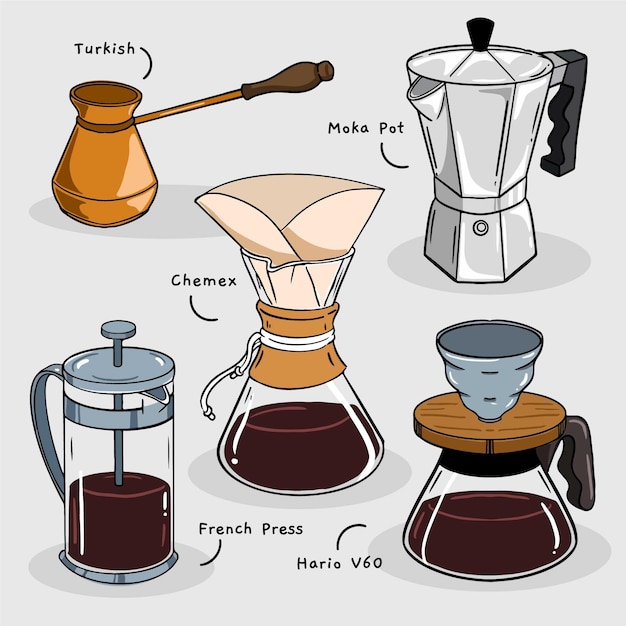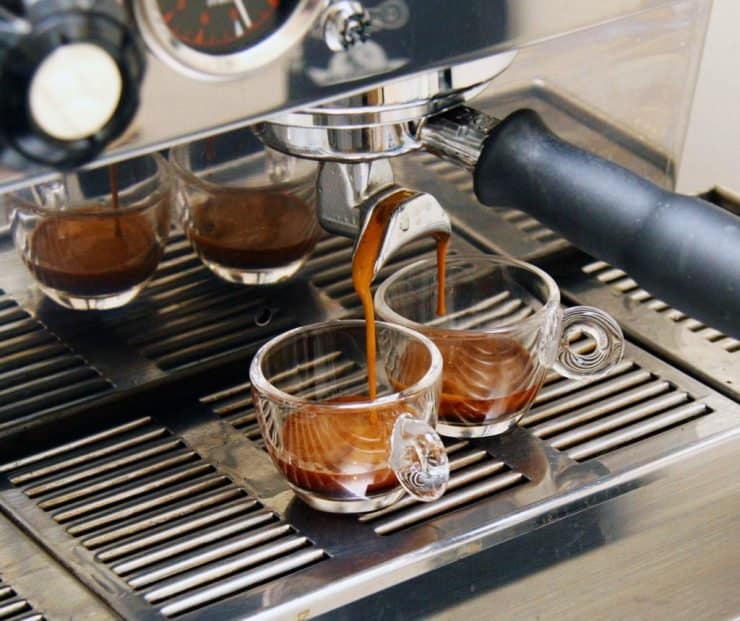The Science Behind Coffee Developing: Just How Temperature Level and Time Affect Your Drink
Comprehending the scientific research behind coffee developing exposes that temperature level and time are not simple variables but crucial components that determine the beverage's flavor profile and total high quality. As we discover the nuances of these elements, the question emerges: exactly how can one properly balance temperature and time to accomplish that perfect mixture?
The Chemistry of Coffee Extraction
The chemistry of coffee removal explores the detailed processes that transform raw coffee beans into the fragrant drink appreciated worldwide. This improvement mainly includes the solubility of various substances existing in the beans, which are influenced by factors such as grind size, water top quality, and the developing method utilized.
During the brewing procedure, warm water serves as a solvent, removing soluble compounds, including caffeine, sugars, acids, and lipids, from the coffee grounds. Each compound contributes to the taste account, fragrance, and body of the final beverage. Acids are liable for bright and appetizing notes, while oils contribute to an abundant mouthfeel.
The removal procedure is not uniform; different compounds liquify at various prices. The initial stages of brewing essence acids and sugars, bring about an enjoyable level of acidity, while long term removal can lead to resentment because of over-extraction of undesirable substances. Comprehending these chemical communications is crucial for optimizing brewing strategies, as the balance in between removal time and water temperature can significantly influence the overall quality of the coffee. Ultimately, mastering the chemistry of coffee extraction is crucial to attaining a savory and well-rounded mug.
Perfect Brewing Temperatures
Finding the ideal developing temperature level is crucial for unlocking the full possibility of coffee flavors and fragrances - coffee brewing methods. Research study indicates that the ideal range for developing coffee lies in between 195 ° F to 205 ° F(90 ° C to 96 ° C) Within this variety, the removal procedure efficiently dissolves the preferable soluble compounds in coffee beans, leading to a well balanced and savory cup
Brewing at reduced temperature levels, such as below 195 ° F(90 ° C ), may result in under-extraction, yielding an acidic and weak mixture with soft tastes. Alternatively, brewing at temperature levels going beyond 205 ° F(96 ° C) can cause over-extraction, creating a extreme and bitter taste because of the extreme dissolution of unwanted substances, such as tannins.
Moreover, the ideal brewing temperature level can vary depending upon the coffee bean kind and roast degree. For instance, lighter roasts often benefit from slightly higher temperatures to boost their intricate taste accounts, while darker roasts may be better suited to lower temperature levels to mitigate resentment.
Ultimately, preserving precision in brewing temperature levels is crucial for accomplishing an unified balance of flavors, ensuring that every mug of coffee delivers a satisfying sensory experience.
Effect of Brewing Time
Developing time plays a pivotal duty in figuring out the flavor profile and overall top quality of coffee. The removal procedure, which influences the taste, aroma, and body of the beverage, is mainly dependent on how long the coffee premises touch with water. Shorter developing times can cause under-extraction, causing a sour or weak taste, as not nearly enough soluble compounds are liquified. On the other hand, long term developing can lead to over-extraction, where undesirable substances are released, resulting in a bitter or astringent preference.
Optimal developing time varies depending on the method made use of and the grind dimension of the coffee. For instance, a French press commonly calls for regarding 4 mins, while espresso removal is typically finished within 25 to 30 secs. It is important to adjust brewing time in conjunction with other variables, such as water temperature level and coffee-to-water ratio, to accomplish the wanted flavor account.
Comprehending the impact of developing time makes it possible for coffee enthusiasts to fine-tune their developing techniques, inevitably enhancing the sensory experience of their cup (coffee brewing methods). With cautious attention to this variable, one can open the full capacity of the coffee, revealing its unique features and nuances
Brewing Methods and Their Impacts

For instance, methods like French press and cool mixture permit a much longer steeping time, leading to a fuller body and durable flavor as a result of enhanced extraction of oils and soluble solids. On the other hand, coffee developing uses high stress and a shorter removal time, producing a concentrated shot that highlights intense tastes and an abundant crema.
Pour-over strategies, such as Chemex or V60, provide a more controlled removal process, allowing the maker to manipulate flow rate and water circulation, which can improve brightness and quality. Percolation approaches cycle water via the coffee premises check my reference multiple times, leading to a stronger, typically bitter flavor.
Finally, making use of paper filters versus metal filters can additionally influence the final preference; paper filters generally generate a cleaner mug by trapping oils and fine fragments, while steel filters enable more oils to travel through, adding to a fuller mouthfeel - coffee brewing methods. Comprehending these subtleties can elevate the coffee experience significantly
Tips for Developing Your Brew
A well-executed mixture can transform even the simplest coffee right into an exceptional experience. To attain this, interest to detail is crucial. Begin with premium, freshly baked beans, as their taste account reduces over time. Grind the beans right before brewing to maximize quality, making sure the grind size matches your brewing approach-- coarser for French press and finer for espresso.
Water top quality plays a vital duty; usage filteringed system water without impurities. The perfect developing temperature ranges in between 195 ° F and 205 ° F(90 ° C to 96 ° C ) Too warm can scorch the coffee, while too trendy may under-extract tastes.
Timing is similarly crucial. For immersion approaches, soaking for three to 5 minutes is optimal, whereas drip methods normally take around 5 mins. Try out brew times to locate your recommended strength.

Final Thought
In recap, the intricate partnership in between temperature and time is extremely important in the coffee brewing process. Understanding these clinical principles equips people to refine their brewing strategies, ultimately leading to an extra well balanced and enjoyable coffee experience.
Recognizing the scientific research behind coffee brewing reveals that temperature level and time are not simple variables but critical components that dictate the beverage's flavor account and total top quality. Comprehending these chemical communications is essential for optimizing developing techniques, as the equilibrium between extraction time and water temperature can considerably affect the total quality of the coffee.Developing time plays an essential role in figuring out the flavor profile and total top quality of coffee. By concentrating on these elements-- bean top quality, straight from the source grind dimension, water temperature, soaking time, and ratio-- you can elevate your coffee developing procedure, resulting in a continually remarkable cup.
In summary, the elaborate connection in between temperature and time is paramount in the coffee developing process.
Comments on “Revealing the Scientific Research Behind Various Coffee Brewing Methods and Their Advantages”